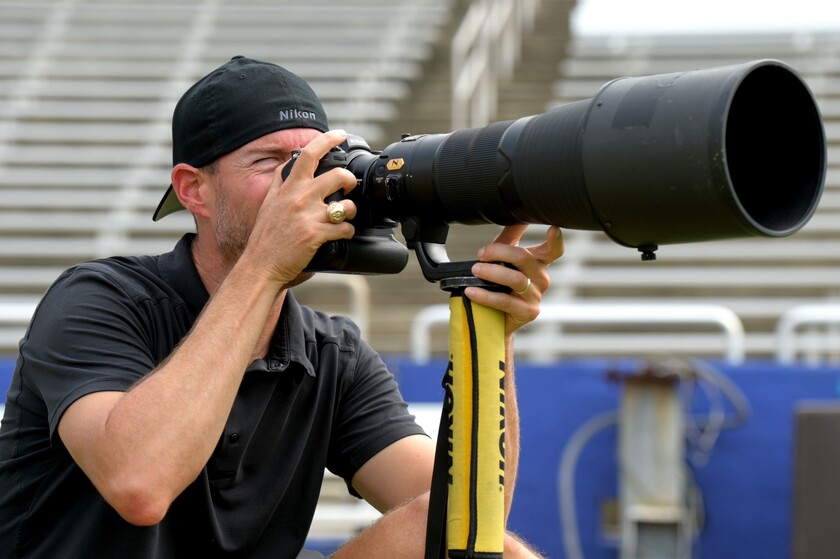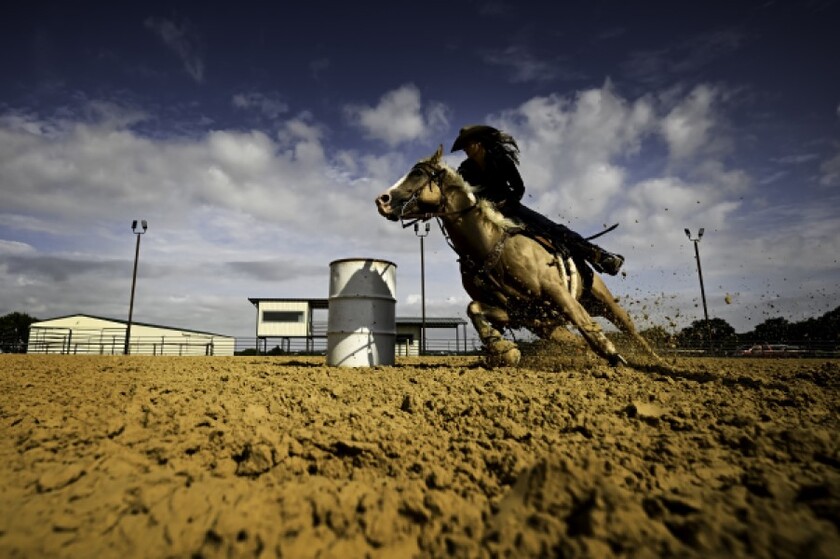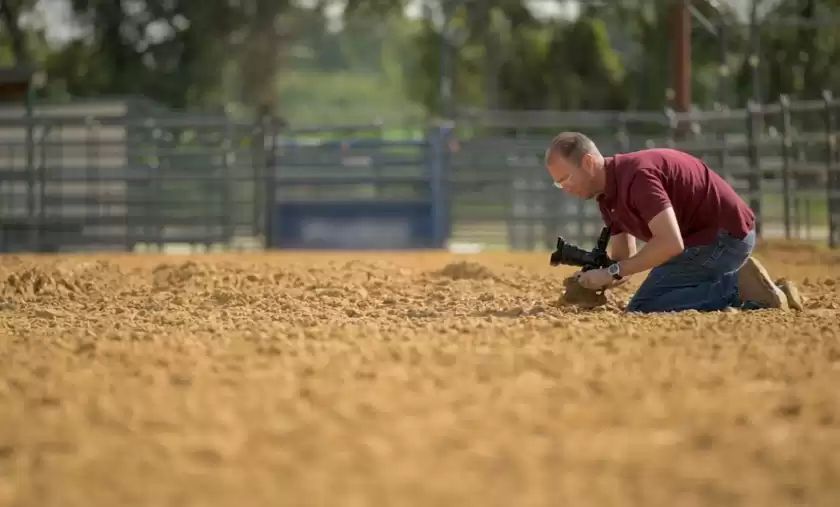Andrew Hancock
Action, Portrait and Reportage Photographer
Eve M. Cohen
With roots as a photojournalist, Andrew Hancock is an action, portrait and reportage photographer most known for his work in the world of sports. Working both commercially and editorially he serves not only the most prestigious editorial outlets but sports leagues, teams, schools and apparel companies.
Featured Project
"I like reliability. I’ve done a lot of work with things I trust, things that empower me to do my job to the best of my ability — like SanDisk Professional drives. When people say, ‘you’re only as strong as your weakest link,’ I think that boils down to technology as well."
"I’m very restless."
By the time Andrew Hancock reached college at Texas A&M, he didn’t have a clue what major to pursue, but he did know that he had liked taking pictures ever since growing up with a Kodak Fisher Price camera. Hancock received his degree in written journalism, but it didn’t take long for him to weave his old passion for photography in with his job. He wanted to be able to tell a story in as many ways as possible, and photojournalism simply offered more flexibility."
I like diversity not only in clients but in storytelling and what I like to pursue," he says. "I’m very restless. I need a lot of change. I completely reject the notion that someone has to focus on one thing in their career. My whole thought is, why can’t I be the best at everything that I want to do?"
Today, Hancock describes himself as an action and portrait photographer, but the element that ties all of his work together is action. In most of his portraits, subjects look to be in mid-thought, or the environment is changing around them. Perhaps Hancock simply loathes the idea of being static. He feels some restless force so powerfully that it shapes every facet of his craft.
"Everything I Need"
Somewhat ironically, photography is no place for those who sit still. The industry changes on a nearly weekly basis. Hancock still has the film-filled binders he shot in college. Today, though, those binders sit in his closet surrounded by stacks of hard drives. Hancock keeps waiting for the flood of data to recede, but it never does. File sizes keep getting bigger, and, as his career matures, his client list keeps growing along with the size of projects requested of him.
Along with the need for larger capacity comes the necessity of higher throughput. Sports projects may involve over a dozen cameras scattered around an event. Over the course of a day, all of those cards and/or drives may need repeated ingesting into centralized storage for processing, editing, and perhaps even turning around to clients for as-live-as-possible social media content. All it takes is one bottleneck to slow the entire workflow. The longer a creative pro like Hancock spends waiting, the less time remains for shooting.
These two demands, capacity and speed, have led Hancock to many storage products over the years.
"I can’t even count how many different types of hard drives I’ve used," he says. "But the ones I kept coming back to were by SanDisk Professional. I found them to be the fastest, and most reliable. They’re great when traveling around the world, and they do everything I need whenever I’m at home." Ultimately, Hancock’s criteria for selecting storage ties straight into his overall business model. He is in the business of capturing speed. He has an eye for strength, efficiency, and power. It’s only fitting that Hancock is adept at employing these characteristics in his equipment choices as he is at capturing them with a camera.
"Bigger and Better Things"
While shooting, images move from Hancock’s cameras straight through his notebook and into G-DRIVE SSD drives, which he designates with alphabet letters for easier tracking in his logs. As soon as there are available minutes, either Hancock or an assistant will connect drive into a G-RAID Shuttle and clone the data to a second drive for safety. This also makes it easy to separate the drives so that data always lives in two physically disparate places.
When the equipment footprint has to be kept minimal with every inch and ounce of packing considered or if Hancock needs to rush files to a client, he will typically use either a G-DRIVE Pro SSD or G-DRIVE SSD, depending on the demands of the assignment and the needs of the client. For instances when the assignment is confidential in nature, such as when he is working with prototype equipment, his new go-to drive is the G-DRIVE ArmorLock SSD to afford him critical security features from ingest to delivery and completion.
Once back in his office, Hancock copies off his location drives onto a series of 64TB1 G-RAID Shuttle units. The ThunderboltTM3 ports of these drives allows Hancock to daisy chain them into higher-capacity volumes, but it also provides for wicked fast copying from the Thunderbolt-based 64TB* G-RAID Shuttle. This is also a big deal for Hancock, who wants to spend as few minutes as possible on routine mop-up at the tail end of a job and instead get back to his wife and daughters.
"I’m not an expert in setting up archives, and I’m not as proficient in data management as I probably need to be," says Hancock. "Fortunately, SanDisk Professional has some of if not the best people in the business for that. I look forward to leaning on their expertise and having them help me into a position to succeed and do even bigger and better things with my craft." SanDisk Professional external hard drives serve as an element of an overall backup strategy. It is recommended that users keep two or more copies of their most important files backed up or stored on separate devices or online services.
PRO-TEAM members are leaders in their respective fields who use SanDisk Professional products in their day-to-day work lives. PRO-TEAM members are compensated for their participation.
SanDisk Professional external hard drives serve as an element of an overall backup strategy. It is recommended that users keep two or more copies of their most important files backed up or stored on separate devices or online services.
1As used for storage capacity, 1TB = one trillion bytes. Actual user capacity may be less depending on operating environment.







